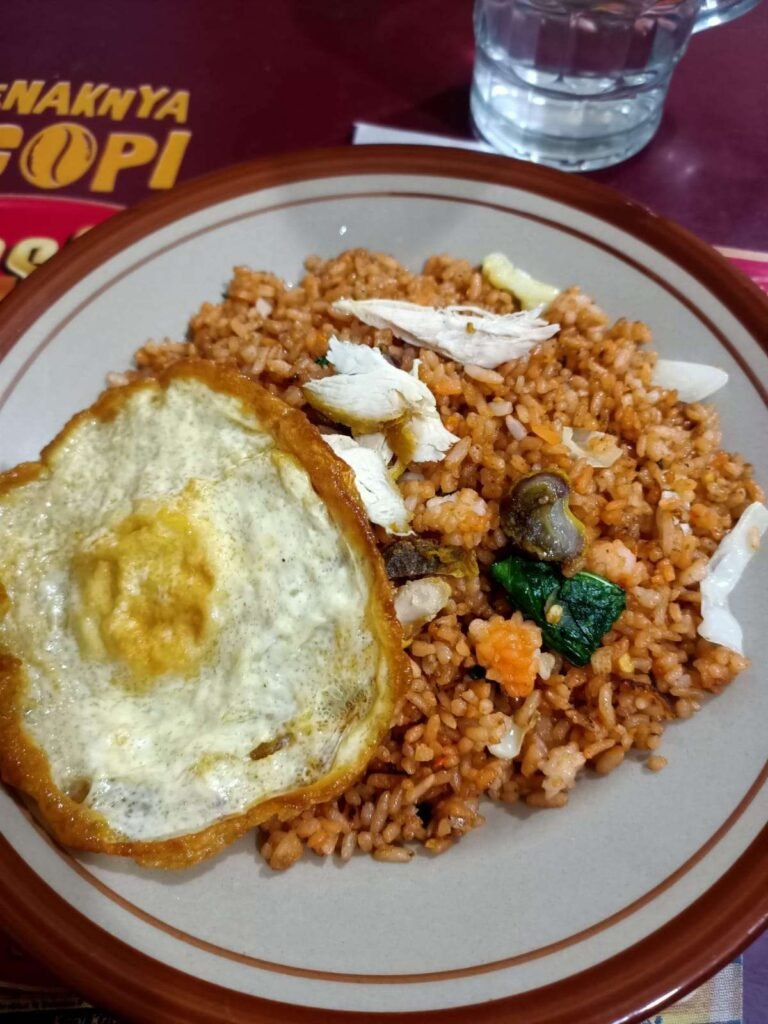Spinach Meatballs That Disappear Fast
Meatballs with spinach are a healthy meal that you won’t be able to get enough of Spinach meatballs are a great solution for me personally: I am always in search for good dishes that provide quick and easy I should mention that Meatballs with spinach just fit the bill!
These little nuggets of goodness are my secret weapon for feeding a crowd without going broke or ditching nutritional quality.
Trust me, at your next gathering, they’ll be gone before you can say “pass the sauce.”
Let’s cut to the chase: Spinach meatballs are tasty, good for you and easy to make.
Whether you opt to go with a lean beef version or lighten things up even more with a chicken alternative, they will deliver a huge amount of nutrition with minimal effort.
Spoiler alert — my favorite way to eat them is drowning in marinara on top of some spaghetti.
Here’s the kicker: These aren’t just any old meatballs. They are packed with iron, vitamin K and other nutrients we need to keep us feeling full and full of energy.
And bonus: They freeze well, so you could make a batch ahead of time and have dinner on the table in no time.
Then again why are spinach meatballs gone in 60 seconds? Let’s dive into the numbers.
| Serving Size | Calories | Protein (g) | Fat (g) | Carbs (g) | Iron (mg) | Vitamin K (μg) | Calcium (mg) |
| 4 beef meatballs | 217 | 30 | 8 | 7 | – | – | – |
| 1 beef serving | 619 | 33 | 50 | 9 | 8 | 157 | 172 |
| 3 chicken meatballs | 180 | 16 | 11 | 5 | 1 | – | 130 |
Curious how spinach meatballs stack up to regular meatballs? Stick with me, I promise this will be an eye-opener.
What Makes Spinach Meatballs So Irresistible?
Spinach meatballs: First things first: spinach meatballs provide that trickiest middle point between taste and nutrition.
And the first time I made them I couldn’t believe how delicious they were, especially being healthier than a typical meatball.
The key is the spinach. Yes, spinach. This leafy green is no longer just for Popeye — it’s a game changer in the kitchen.
Research indicates that spinach can minimize the brain-damaging effects of a high fat diet as well as boost mental health by providing its stress-antidote properties.
Who would’ve thought greens could feel so good?
But let’s look at the numbers. Check out the nutrition breakdown for the beef version: each serving contains 619 calories, 33 grams of protein and 50 grams of fat.
That may seem like a lot, but those 33 grams of protein are important when it comes to both muscle repair and fuel. And guess what? Beef is easily substituted for chicken, if you want something lighter.
Chicken-spinach-feta meatballs come in at only 180 calories for three balls, packing 16 grams of protein and 11 grams of fat.
What’s especially exciting is how versatile they are. You can serve them over pasta, rice, salads or even in sandwiches.
They’re also freezer-friendly, so you can cook a huge one and reheat whenever you want a fast meal. Prep time? Just 15 minutes. Cook time? Another 20 minutes. Total? Thirty-five glorious minutes.
And here’s another stat to blow that mind: Spinach meatballs are loaded with essential micronutrients. An impressive 104% of your daily value (DV) for iron, 131% DV for vitamin K, 17% DV for calcium, and 18% DV for Vitamin A are all packed into one dish and one serving!
That means by consuming one recipe of roasted broccoli, you’re providing your body with lots more than it needs.
And the cherry on top: they’re super fast, taste great and freeze well too. Because, seriously, who doesn’t love that duo?
Why Spinach Meatballs Rule
I didn’t know what to expect when I first learned about spinach meatballs. But once I sampled them, it was instant conversion. The best part? And they aren’t just good for you — they’re fantastic.
Let’s revisit the breakdown of the numbers. For one, spinach meatballs are a great source of iron, which is vital for producing healthy blood and preventing fatigue. Need proof? One serving contains up to 104% of your daily iron needs. And then there’s vitamin K, which is vital for healthy bones and for blood to clot. For example, one serving of spinach meatballs satisfies a whopping 131% of your daily vitamin K quota.
Now, let’s talk protein. Protein is not only the king of muscle building, it is also key to staying full longer. Beef spinach meatballs bring in 30 grams of protein for four balls, and chicken-spinach-feta meatballs provide 16 grams for three balls. That’s enough to satisfy you between meals.
But you know what’s funny? Spinach meatballs are also about mental health. Studies also suggest that spinach is an anti-stress agent and can even aid in enhancing cognition. Indeed, research indicates that making spinach a regular part of your diet can also increase brainpower and curb anxiety.
Another reason I really like spinach meatballs is that they’re versatile. You can serve them in so many ways — over pasta, on a pile of rice, tossed with a salad, stuffed into a sandwich. And because they freeze beautifully, you may as well make a big batch and know that you can have dinner at a few moments’ notice.
Here’s a floaty-ball fact for you: spinach meatballs (for some reason especially these ones) are freezer-friendly for up to three months. That means you can cook once, eat twice — or even three times. The prep is hardly any effort and the reward is so big.
The tiny thing: spinach meatballs are, as it turns out, extremely budget-friendly. Both the fresh spinach and lean ground beef can be a little expensive upfront, but you end up using less meat per serving because of the extra spinach. And you save money by freezing leftovers for future meals.
In a word, spinach meatballs were the perfect win-win: healthy, yummy and convenient. Who would not want that on a plate?
How to Make Spinach Meatballs Like a Pro
Believe it or not, it’s easier than you might imagine to get spinach into meatballs. Just fresh spinach, lean ground beef or chicken, some pantry staples. Here’s our step-by-step guide to these crowd-pleasers.
Start by cooking the spinach. Heat 1 tablespoon of the olive oil in a pan, add the spinach and wilt it. Rinse using a colander, and let cool.
Then combine your ground meat of choice with the spinach, breadcrumbs, eggs, garlic powder, onion powder, salt, and pepper. Roll the mixture into small balls, approximately 2 inches in diameter.
If you want to kick the flavor up a notch, feta is a nice addition in your chicken-spinach filling. It adds a sharp punch that plays really nicely with the earthiness of spinach.
When your meatballs are formed, you’ll want to bake them in an oven preheated to 375°F (190°C) for about 20 minutes. If you like crispy edges, broil them for 5 more minutes.
Here’s a pro tip: give the little guys some room on the baking sheet. Just make sure you space them fairly evenly so they cook evenly.
Also, try to avoid the temptation to press them down while they cook — they’ll maintain their shape better if you leave them.
You should probably serve them hot, with your preferred dipping sauce or with the rest of a meal.
Any leftovers can be sealed in an airtight container and kept in the fridge for a maximum of 4 days or in the freezer for up to 3 months.
And that’s it! A restaurant-quality recipe that’s easy and simple. The best part? You can adapat the ingredients based on what you like.
Love spicy food? Add red pepper flakes. Prefer a Mediterranean twist? Swap feta for goat cheese.
The Science Behind Spinach Meatballs’ Popularity
Spinach meatballs are leaving the table faster than a heartbeat — and there’s a reason. It’s not just a question of taste — there’s science involved.
First, let’s praise the magic of spinach portability. Antioxidant rich, spinach fights free radicals and inflammation in the body.
Research suggests that eating spinach regularly reduces the risk of a number of diseases including heart disease and cancer.
And spinach is calorie low and fiber high, making it a desirable ingredient in weight loss.
And finally, let’s talk about protein. You need protein for muscle building, immunity, and general health.
Nice and light these spinach meatballs are easily to digest and not as greasy as some other balls!
In the beef variety, four balls will give you 30 grams of protein, while the chicken version containes 16 grams per three balls.
But wait, there’s more. Spinach meatballs are also filled with crucial vitamins and minerals.
Vitamin K is in rich supply in spinach and is critical for blood coagulation and healthy bones. It is a significant source of vitamin K, with one serving delivering 131 percent of your daily recommended intake.
And we mustn’t overlook iron, which is essential for transporting oxygen in the blood.
Here’s a cool bonus fact: spinach meatballs are lower in carbs than regular meatballs! The beef variety has only 9 grams of carbohydrates per serving; for chicken it’s 5 grams.
That, of course, makes them a good option for people following a low-carb diet.
Best part: spinach meatballs are freezer-friendly, so you can whip them up in big batches and enjoy them whenever. This is actually one of the reasons they are so popular.
In other words, spinach meatballs are a culinary win-win: They make both your taste buds and your health objectives equally happy.
No wonder they are vanishing all over the place!
The Surprising Benefits of Adding Spinach to Your Die
When many people think of spinach, they picture Popeye getting through rough spots. But there’s so much more to this leafy green than you think.
For one, spinach is a nutrient powerhouse which sounds good for our mental well-being. Research has found that the antioxidants in spinach can lower stress and improve brain function.
That’s enough to make spinach a wonderful thing to add to your diet, particularly if you’re crazy busy and/or stressed out!
But never mind the physical benefits. Spinach is also loaded with iron to support healthy blood production and prevent anemia.
A single serving of spinach meatballs can contain as much as 104% of your daily iron requirement. And there’s also vitamin K, which is important for bone health and blood clotting.
Spinach meatballs provide a huge 131% of your daily needs for vitamin K.
Another surprising benefit? Spinach can mitigate the negative effects of a high-fat diet. We’re here to tell you spinach could be your go-to food to combat the damaging effects of a fatty meal, as per a new study.
A new study has discovered that eating the spinach a day cuts the risk of heart problems, according to the Share this article ShareResearch on rats found that eating more greens prevented the organ damage caused by the high-fat food.
It’s thought to be the first assessment of how foods, such as spinach, can, indirectly, stop arteries from ‘furring’ up. That’s what makes spinach meatballs such a great option for those who want to watch what they eat!
And we can’t overlook the anti-inflammatory benefits spinach has. It is chronic inflammation that is associated with so many health problems: arthritis, diabetes, heart disease. By feeding your body spinach, you’re adding an extra line of defense.
Here’s a fun fact: Spinach is also an excellent source of vitamin A, which is good for your eyes and immune system. Spinach meatballs will give you 18% of the daily value for vitamin A.
In other words, spinach is more than just some green you get on your plate, it’s a nutrient-rich power food that benefits not just your body, but your mind too.
Spinach Meatballs
Meal prep is that much easier with spinach meatballs. Not only are these little nuggets of yum delicious, they are also so practical.
Prep time, to begin with. A batch of spinach meatballs takes just 15 minutes of active cooking.
Yes, you can have a week’s worth of dinners in under 30 minutes. And because they freeze like a dream, you can save them for up to three months.
The kicker here: spinach meatballs can be frozen for up to three months. That means you’ll cook once and eat twice — or three times.
Just install them in the microwave or the oven when you’re ready to eat.
But wait, there’s more. Spinach meatballs are so versatile, you can serve them with just about anything. Serve them over pasta, rice, in salads or even in sandwiches. The options are limitless.
And don’t get me started about portion control. Spinach meatballs are full of fiber and protein, which keep you fuller longer.
This does make them a popular choice, especially to those looking to lose a few pounds.
Lastly, there’s the fact that spinach meatballs are budget friendly. Yes, buying fresh spinach and lean ground beef can seem expensive at first, but you’re actually using less meat per serving because of all the spinach you’re adding. And you’ll save money by freezing leftovers for later meals.
So, yes, spinach meatballs are the best meal prep solution ever. They’re fast to make and store well, and are versatile enough for any occasion.
Final Thoughts
Spinach meatballs aren’t just a delicious recipe that people rave about for a reason, they’re a nutritional treasure trove that will have you scooping thirds before you know it.
They are super high in protein, full of essential micronutrients, and can be added to absolutely any meal!
Whether you serve them at a family gathering or eat them on a busy weeknight, meatballs made of spinach live up to the hype in the flavor-and-nutrition department.
But they are a win-win in the end: healthy, delicious, convenient.

I’m Kai, a fitness fiend and wellness geek from Vancouver. I love helping people find small, sustainable ways to feel better every day. From workouts, to good mental health, to smoothie recipes, I keep it real. Perfection is not my thing — progress is. When I’m not at the gym, I’m likely to be hiking or sampling a new meditation app







